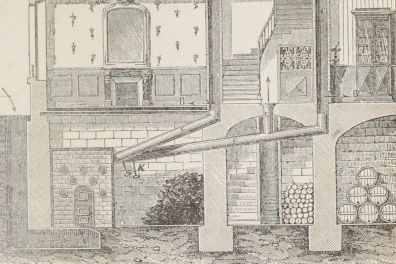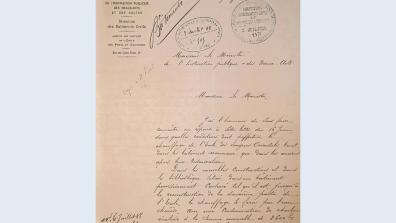Heating at Inalco through the centuries

The state architect, Louis Faure Dujarric, included in his initial plans a budget for smoke and fumes work, including the temporary installation of a water-fired calorifier (the old name for radiators) and a temporary heating system combining coal-fired stoves and radiators to combat the cold and damp.
The installation of the calorifier would serve in particular to protect the library, which was to occupy part of 2 rue de Lille. The high levels of humidity in the ground-floor storerooms endangered rare works. For Faure Dujarric, stoves were not enough, and the architect insisted as early as 1883 that a calorifier should be installed quickly to avoid too serious damage to the school's collections¹.

However, the library is not the only room that poses problems from this point of view. As noted in a letter to the Minister of Public Instruction in 1888, "no provision has been made for heating the classrooms, study room and boardroom in the old building"². In 1902, although the majority of the work had been completed almost ten years earlier, the architect was still asked to refurbish the school's hot-water calorifiers before winter³.
The question arose again almost half a century later, in 1942, when the Administrator of Oriental Languages asked the Prefect for authorization to prepare the work for the school's connection to the urban heating network⁴. Thus from 1873 to 2023, the fight against the cold on our premises continued to warm bodies and minds.
¹ Statement of expenditure drawn up by Louis Faure Dujarric, 1883, F/21/5971, Archives nationales de Pierrefitte.
² Letter addressed to the Minister of Public Instruction and Fine Arts, June 6, 1888, F/21/5971, Archives nationales de Pierrefitte.
³ Letter from Louis Faure Dujarric to the Minister of Public Instruction dated September 24, 1902, F/21/5972, Archives nationales de Pierrefitte.
⁴ Letter from the administrator to the Secretary of State for National Education dated July 16, 1942, F/*/17/14586, Archives nationales de Pierrefitte.